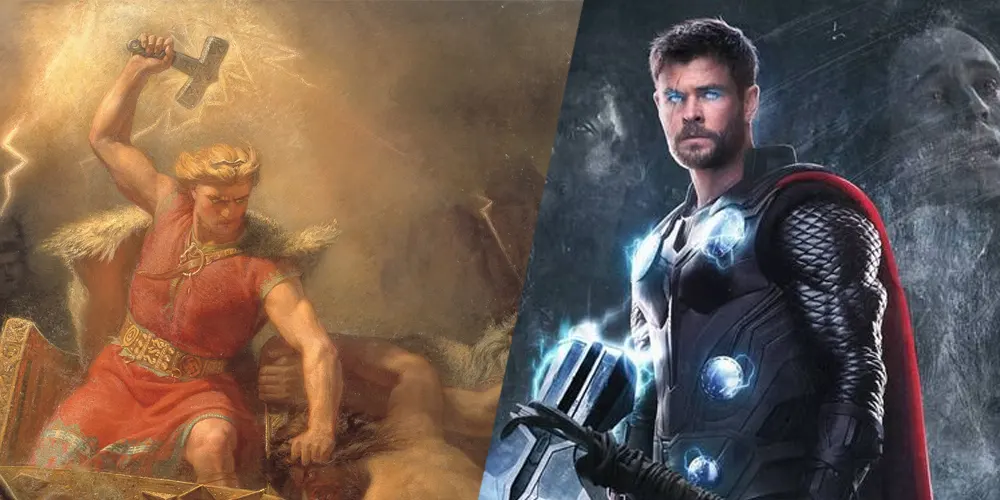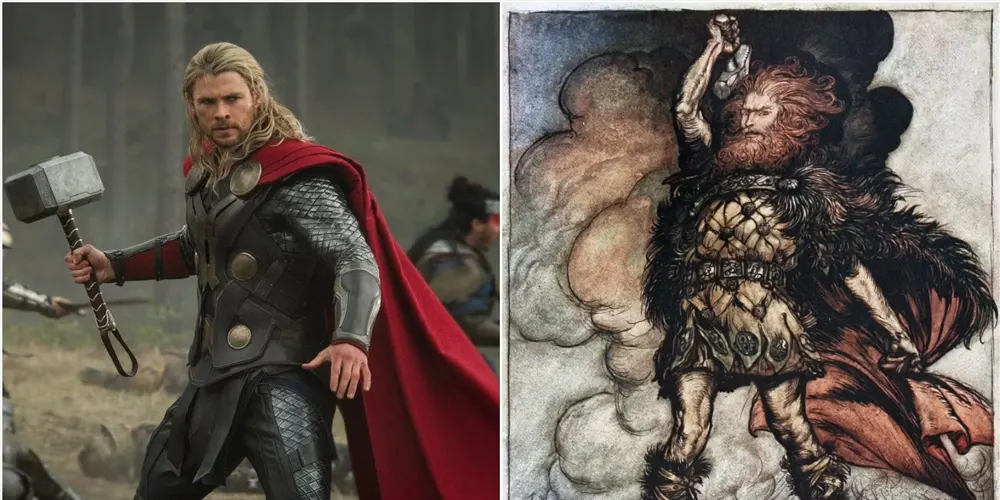Nordic Discovery, Viking
Norse Mythology vs Marvel: What Hollywood Got Wrong About Viking Gods
Norse mythology has captured the modern imagination, with figures like Thor, Loki, and Odin achieving widespread recognition, largely due to their portrayal in the Marvel Cinematic Universe. These powerful Norse gods have transcended their mythical origins to become pop culture icons, inspiring everything from blockbuster movies to Halloween costumes. However, the depictions familiar to many through Marvel often diverge significantly from the original myths.
Let’s delve into the ways Hollywood has both accurately and inaccurately portrayed these Viking gods, and discover how the authentic legends hold an even greater fascination.

Thor: The Red-Bearded God, Not a Polished Superhero
In Marvel movies, Thor is portrayed as a muscular and charming god of thunder, capable of flight by spinning his magical hammer, Mjölnir. However, Norse mythology presents a significantly different figure.
The authentic Thor is depicted as red-bearded, possessing a fierce temper, and exhibiting immense strength. Rather than flying, he travels in a chariot drawn by two goats, Tanngrisnir and Tanngnjóstr. His formidable power originates not only from Mjölnir but also from a magical belt called Megingjörð and iron gloves.
Within the myths, Thor serves as a protector of humankind, yet he is also characterized as brash and occasionally imprudent. While Marvel has refined his image for contemporary audiences, this sanitization has, in the process, stripped away much of his original, rugged Viking essence.
In Marvel movies, Thor is portrayed as a muscular and charming god of thunder, capable of flight by spinning his magical hammer, Mjölnir. However, Norse mythology presents a significantly different figure.
The authentic Thor is depicted as red-bearded, possessing a fierce temper, and exhibiting immense strength. Rather than flying, he travels in a chariot drawn by two goats, Tanngrisnir and Tanngnjóstr. His formidable power originates not only from Mjölnir but also from a magical belt called Megingjörð and iron gloves.
Within the myths, Thor serves as a protector of humankind, yet he is also characterized as brash and occasionally imprudent. While Marvel has refined his image for contemporary audiences, this sanitization has, in the process, stripped away much of his original, rugged Viking essence.
Loki: Mischief Maker or Tragic Villain?
Marvel’s interpretation of Loki has made him a beloved character—clever, sarcastic, and at times, even eliciting sympathy. However, the Loki of Norse mythology embodies a darker and more chaotic nature.
In the original myths, Loki is not Thor’s adopted brother but rather a cunning Jötunn (giant) known for his shifting allegiances and his penchant for causing mayhem. Ultimately, he plays a significant role in triggering the cataclysmic events of Ragnarok. Furthermore, he is the father of monstrous offspring, including Fenrir the wolf, Jörmungandr the world serpent, and Hel, the goddess of the underworld.
While Marvel’s version softens Loki, portraying him as a misunderstood anti-hero, the original stories depict him as a figure far more dangerous than dashing.
Odin: The All-Father With a Price
Odin in Marvel is wise and noble—an elderly king guiding Asgard with patience. But the real Odin is far more complex.
In Norse tales, Odin is a god of war, wisdom, and death. He sacrificed his eye in exchange for divine knowledge and hung himself from the World Tree (Yggdrasil) to discover runes. He’s manipulative, strategic, and willing to sacrifice anything for power.
Unlike the moral father figure in Marvel, the mythological Odin is a ruthless seeker of knowledge—both respected and feared.
Forgotten or Altered: Other Gods Who Deserve the Spotlight
Marvel chose only a few gods to spotlight, but Norse mythology has many rich characters that deserve attention:
-
Freyja: Goddess of love and war, a warrior and seeress who rides a chariot pulled by cats. She’s as powerful as Odin but rarely mentioned in Hollywood.
-
Hel: Daughter of Loki, ruler of the underworld. Marvel turned her into Thor’s sister—something never found in the myths.
-
Tyr: God of justice, known for sacrificing his hand to bind the wolf Fenrir.
-
Balder: The beloved god of light whose tragic death sets off the events of Ragnarok.
These figures are full of symbolism and drama—perfect for storytelling but largely ignored on screen.
So, What Did Marvel Get Right?
To its credit, Marvel did introduce Norse mythology to millions who might never have explored it otherwise. The films sparked interest and brought ancient gods to life in fun, engaging ways.
However, they also shaped a simplified, glossy version of the myths. The original stories are darker, deeper, and more symbolic.
Conclusion: The Real Norse Gods Deserve Their Own Spotlight
Marvel is entertainment, and that’s okay. But the original Norse legends have their own gritty magic—full of blood, betrayal, sacrifice, and strength.
If you’re fascinated by the world of Viking gods, dive deeper into the real mythology. And if you’re inspired by their symbols, explore our authentic Norse-inspired home décor and apparel—designed with the true Viking spirit in mind.
→ Discover Viking decor & apparel inspired by the real gods of Norse legend. [Shop Now]


